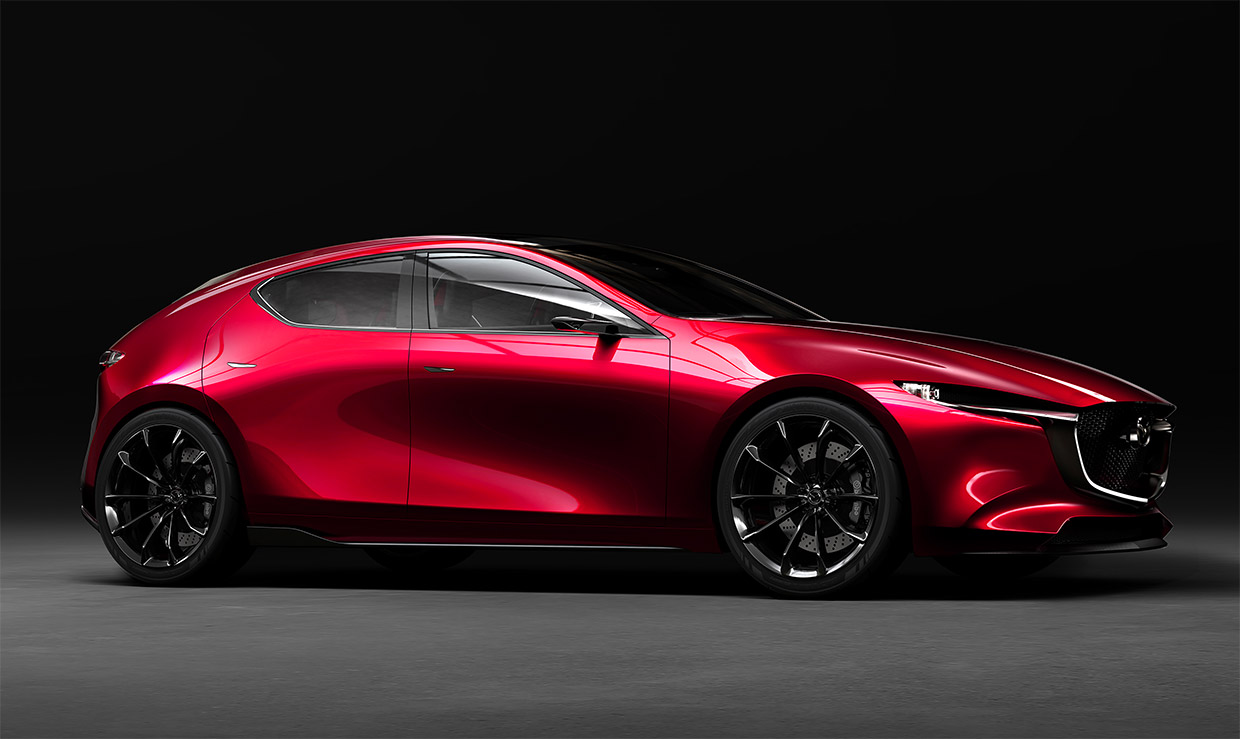Cars
Will Mazda’s Skyactiv-X Tech Revolutionise Petrol Engines?
Mazda’s impressive new engine technology is set to change the game.

Many auto manufacturers are pouring tons of their research and development budgets into pioneering and fine-tuning electric engines, the primary proponent being Elon Musk’s Tesla brand. The new concept car Mazda unveiled for the Tokyo Motor Show, the ‘Kai’, certainly looks fantastic, but the most impressive part of the car may actually be sitting under its aggressively styled bonnet, dubbed the ‘Skyactiv-X’ engine.
Mazda have been developing a petrol engine with a twist that might just get people adopting their cars due to the engine’s projected efficiency and lowered carbon footprint. Electric cars are clearly the long-term solution, but due to the cost of researching and manufacturing them, they’re not going to be affordable for the average consumer for quite some time. Mazda’s new Skyactiv-X engines could be a perfect halfway point in our gradual transition from fossil fuel vehicles.
In order to explain how the technology works, we’re going to have to dive into the nuts and bolts of petrol and diesel engines for a little bit. So, internal combustion engines, using either petrol or diesel as their fuel sources, use either sparks or compression as their method of achieving combustion. Petrol engines use spark plugs, while diesel engines use compressed, heated air to generate its combustion. While diesel is less environmentally friendly due to the emissions, diesel engines do produce more torque and have better consumption due to the method of combustion.
Take a look at the video below that will give a step by step explanation of how the engine functions:
https://www.youtube.com/watch?v=N_No3KSaTrM
Now, Mazda, through their innovative designs, have managed to effectively combine the best of both worlds by creating an engine that runs on petrol, but that uses a combination of combustion methods (combing spark-plug assisted ignition with compression combustion) which the Japanese manufacturer claims will result in a 30% increase in engine torque, but also a 20% decrease in fuel consumption.
This effectively creates a ‘best-of-both-worlds’ engine and may end up being a massive draw for buyers of new cars. The new engine will debuted in the new Mazda 3, slated for a 2019/2020 release date, and may put some pressure on other brands to develop similar engines of their own to stay competitive.

Is electric the future, or does the market still have space for innovative petrol engines that be a little easier on the consumer’s pocket?






















